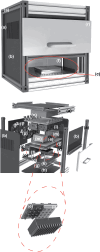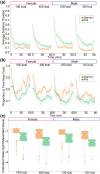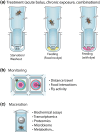Whole Animal Feeding FLat (WAFFL): a complete and comprehensive validation of a novel, high-throughput fly experimentation system
- PMID: 36650008
- PMCID: PMC9997563
- DOI: 10.1093/g3journal/jkad012
Whole Animal Feeding FLat (WAFFL): a complete and comprehensive validation of a novel, high-throughput fly experimentation system
Abstract
Non-mammalian model organisms have been essential for our understanding of the mechanisms that control development, disease, and physiology, but they are underutilized in pharmacological and toxicological phenotypic screening assays due to their low throughput in comparison with cell-based screens. To increase the utility of using Drosophila melanogaster in screening, we designed the Whole Animal Feeding FLat (WAFFL), a novel, flexible, and complete system for feeding, monitoring, and assaying flies in a high-throughput format. Our 3D printed system is compatible with inexpensive and readily available, commercial 96-well plate consumables and equipment. Experimenters can change the diet at will during the experiment and video record for behavior analysis, enabling precise dosing, measurement of feeding, and analysis of behavior in a 96-well plate format.
Keywords: Drosophila; feeding behavior; high-throughput; screening.
© The Author(s) 2023. Published by Oxford University Press on behalf of the Genetics Society of America.
Conflict of interest statement
Conflicts of interest The authors have no conflicts of interest to declare.
Figures






References
-
- Arias AM. Drosophila melanogaster and the Development of Biology in the 20th Century. Totowa (NJ): Humana Press; 2008. - PubMed
-
- Attene-Ramos MS, Miller N, Huang R, Michael S, Itkin M, Kavlock RJ, Austin CP, Shinn P, Simeonov A, Tice RR, et al. The Tox21 robotic platform for the assessment of environmental chemicals: from vision to reality. Drug Discov Today. 2013;18:716–723. doi:10.1016/j.drudis.2013.05.015 - DOI - PMC - PubMed
Publication types
MeSH terms
Associated data
Grants and funding
LinkOut - more resources
Full Text Sources
Molecular Biology Databases
